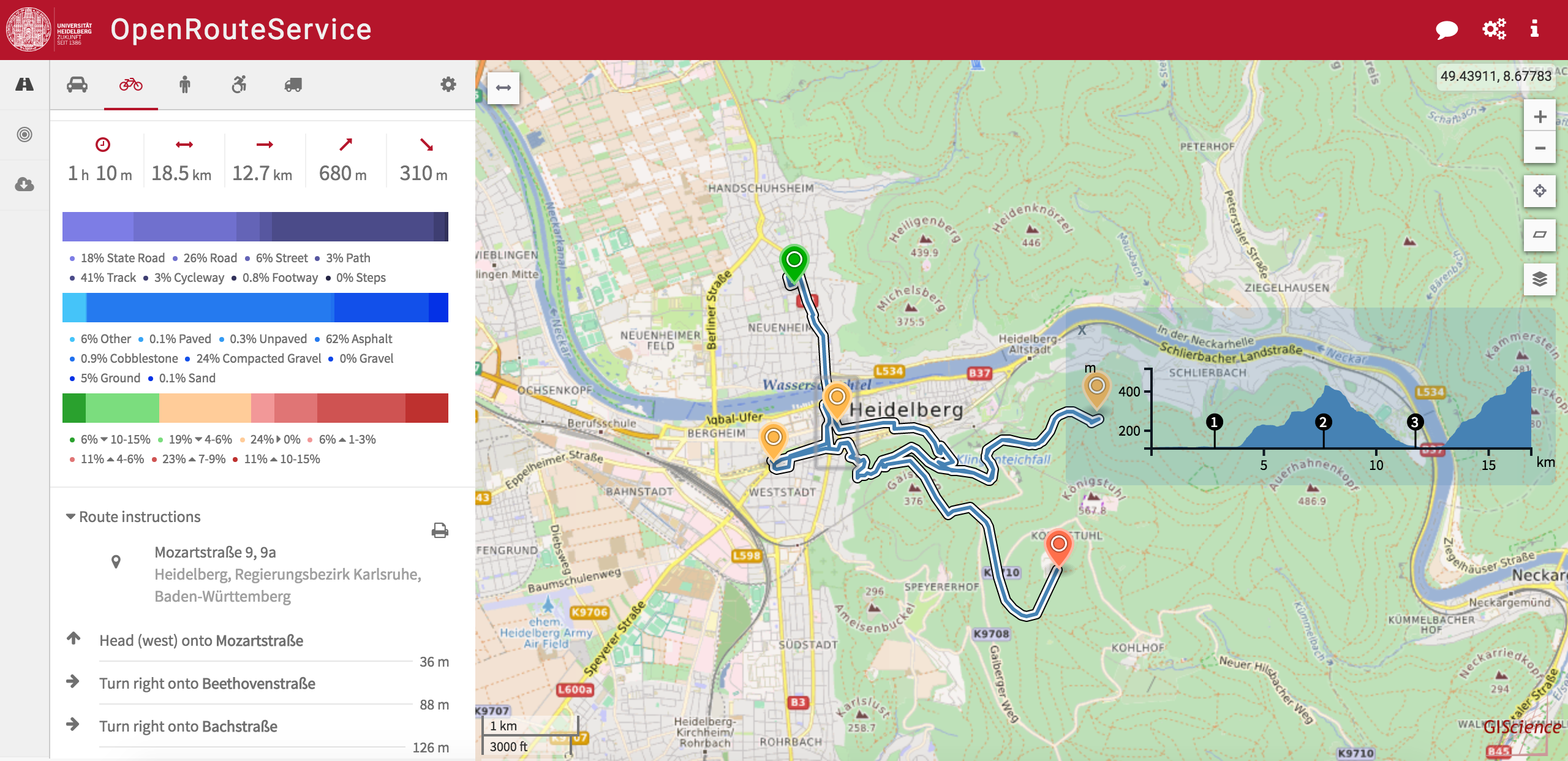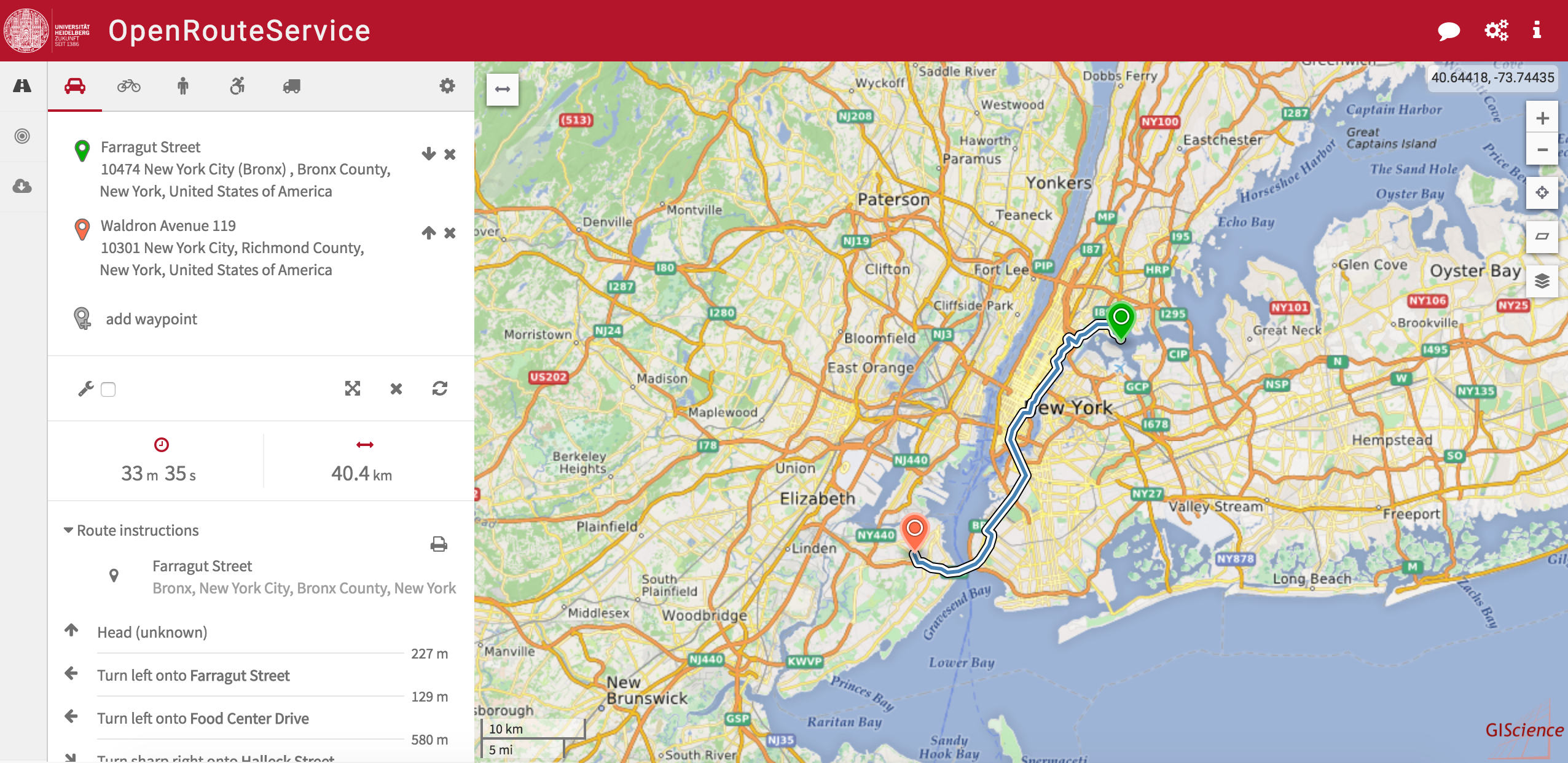In our latest release we have primarily focused on optimising and stabilising the backend and on adding new elements to provide an improved user experience throughout the OpenRouteService 3.3 based on OpenStreetMap data.
After many requests from our community, we for starters can happily announce that we have made the service responsive for your mobile smartphones. You are now able to compute your routes when you are on the go.
Furthermore we have changed the styles and layout of the service to ultimately bring the user experience to the next level. Amongst these updates we are happily to feature:
- A new route summary, now also comprising ascent and descent information for outdoor profiles
- The possibility to download GPX files containing elevation information provided by the service
- A more intuitive options menu giving you the option to parameterise your route preferences
- Several tooltips informing you with hints for the specific buttons
Please feel free to send us any kind of feedback with suggestions or improvements.
Additionally we have been working on several novel features for all of you outdoor lovers. As you have noticed in our last update we added height information in form of an elevation profile for the bicycle, pedestrian and wheelchair profile. We now actually started to crunch this information to ultimately derive ascent and descent values along the route. By doing so we created a new horizontal chart comprising the specific gradients and its percentages which can be hovered and seen in the map accordingly. As also requested by the ORS community we added via points along the route into the elevation profile to increase the readability.
And of course we have been improving the stability of the service. In the course of this we upgraded our backend with additional storage which gives us means to offer you car routing capabilities for North and South America.
Happy Routing!
Links:




